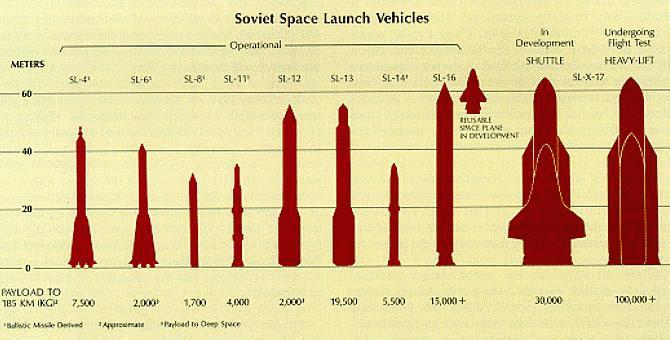Red Moon: The Soviet Moon Program
Posted: 2009-01-04 08:41am

So I was reading through a book on the Energyia-Buran complex and I noted this line:
Clearly, a sad thing. Stas no doubt will be along with some russian language sources shortly, or with more information...A LUNAR BASE OR A SHUTTLE?
Although studies of reusable space transportation systems were underway by the time TsKBEM was reorganized into NPO Energiya in May 1974, at that time they were certainly not considered the main priority. Glushko himself was opposed to the development of a Space Shuttle equivalent and in the first week following his appointment had even disbanded Burdakov's shuttle team, only to reinstate it on the insistence of Igor Sadovskiy, who in turn was placed in charge of the shuttle department [8].
Glushko feared the shuttle program would jeapordize plans to establish a per-manent base on the Moon. Despite the suspension of the N-l project, the manned lunar program was not dead. Not only was a lunar base considered an appropriate response to the short-duration Apollo flights, for Glushko personally it would be a sweet revenge on Korolyov's star-crossed N-l/L-3 effort. Initially at least, Glushko had the support of Dmitriy Ustinov, who in his capacity of Communist Party Secretary for Defense Matters served as the de facto head of the Soviet space program from 1965 until 1976. A long-time ally of Glushko, Ustinov may very well have been instrumental in getting him the top job at NPO Energiya. Opening a top meeting at NPO Energiya on 13 August 1974, Ustinov said:
"In recent days the Politburo has held serious discussions on our space problems ... It was said at the Politburo that, taking into account the successful landings of the Americans, the task of conquering the Moon remains especially important for us. Whatever task we carry out, this will remain our main general task, but in a new [form]." [9]
Even though work on a lunar base was already underway at the K.BOM design bureau of Vladimir Barmin, Prudnikov's department at NPO Energiya set to work. By the end of 1974 it completed preliminary plans for a permanently manned lunar base called Zvezda ("Star") that would see three-man crews working on the surface of the Moon for up to a year before being changed out. The plan included a Lunar Expedition Ship (LEK) to transport the crews to the Moon and a lunar base consisting of a Lab-Hab Module, a Lab-Factory Module, a manned lunar rover, and a small nuclear power plant to provide power to the various elements of the base. The scheme required multiple launches of a massive rocket in the RLA family capable of putting 230 tons into low Earth orbit, 60 tons into lunar orbit, and 22 tons on the lunar surface [10].
By the first half of 1975 NPO Energiya had devised a so-called "Integrated Rocket and Space Programme", which included the plans for the RLA rocket family, the Zvezda lunar base, and reusable spacecraft. It was submitted for approval to the Ministry of General Machine Building and the Ministry of Defense. Apparently, the hope was that all these elements would be approved. However, by this time Zvezda, Glushko's pet project, stood little chance of surviving. Not surprisingly, the lunar base received no support whatsoever from the military. Neither did it recieve the blessing of the Academy of Sciences (in the person of Keldysh) and Ustinov's initial support had dwindled for a variety of reasons [11]. Clearly, many had been sobered up by the fact that the estimated price tag for the project was 100 billion rubles [12].
